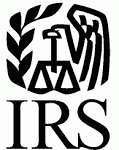The IRS has issued Rev. Proc. 2018-18, which revises the previously-published annual limitation on deductions under Code § 223(b)(2)(B) for 2018 for an individual with family coverage under a high deductible health plan. The originally published limitation was $6,900. It has now been reduced to $6,850.
Why the Change?
The recently enacted Tax Cuts and Jobs Act requires cost of living adjustments be made using the Chained Consumer Price Index for All Urban Consumers (C-CPI-U), which over time will reduce the cost of living adjustments made to various IRS limits.
What to Do
Employers making Health Savings Account (HSA) contributions for employees (either directly, or through their cafeteria plans) should review the elections made by their employees and adjust those elections to avoid exceeding the $6,850 limitation for 2018. Likewise, individuals making HSA contributions should revise any automatic contribution schedule they have established to avoid exceeding the limit.
The following chart summarizes various significant employee benefit Plan limits for 2016 through 2018:
| Type of Limitation | 2018 | 2017 | 2016 |
| 415 Defined Benefit Plans | $220,000 | $215,000 | $210,000 |
| 415 Defined Contribution Plans | $55,000 | $54,000 | $53,000 |
| Defined Contribution Elective Deferrals | $18,500 | $18,000 | $18,000 |
| Defined Contribution Catch-Up Deferrals | $6,000 | $6,000 | $6,000 |
| SIMPLE Employee Deferrals | $12,500 | $12,500 | $12,500 |
| SIMPLE Catch-Up Deferrals | $3,000 | $3,000 | $3,000 |
| Annual Compensation Limit | $275,000 | $270,000 | $265,000 |
| SEP Minimum Compensation | $600 | $600 | $600 |
| SEP Annual Compensation Limit | $275,000 | $270,000 | $265,000 |
| Highly Compensated | $120,000 | $120,000 | $120,000 |
| Key Employee (Officer) | $175,000 | $175,000 | $170,000 |
| Income Subject To Social Security Tax (FICA) | $128,400 | $127,200 | $118,500 |
| Social Security (FICA) Tax For ER & EE (each pays) | 6.20% | 6.20% | 6.20% |
| Social Security (Med. HI) Tax For ERs & EEs (each pays) | 1.45% | 1.45% | 1.45% |
| SECA (FICA Portion) for Self-Employed | 12.40% | 12.40% | 12.40% |
| SECA (Med. HI Portion) For Self-Employed | 2.9% | 2.9% | 2.90% |
| IRA Contribution | $5,500 | $5,500 | $5,500 |
| IRA Catch-Ip Contribution | $1,000 | $1,000 | $1,000 |
| HSA Max. Contributions Single/Family Coverage | $3,450/ $6,850 | $3,400/ $6,750 | $3,350/ $6,750 |
| HSA Catchup Contributions | $1,000 | $1,000 | $1,000 |
| HSA Min. Annual Deductible Single/Family | $1,350/ $2,700 | $1,300/ $2,600 | $1,300/ $2,600 |
| HSA Max. Out Of Pocket Single/Family | $6,650/ $13,300 | $6,550/ $13,100 | $6,550/ $13,100 |



 The U.S. Department of Labor’s Employee Benefits Security Administration, the IRS, and the Pension Benefit Guaranty Corporation (PBGC) have releasedadvance informational copies of the
The U.S. Department of Labor’s Employee Benefits Security Administration, the IRS, and the Pension Benefit Guaranty Corporation (PBGC) have releasedadvance informational copies of the